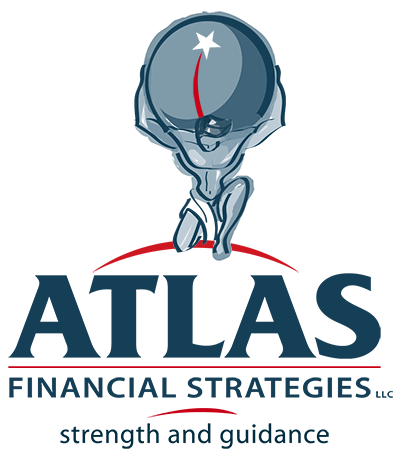- Our Process
- Video Learning Library
- Third Party Resources
- In the News
- Contact
- Investment Team
- Informational Guides
- Client Forms
- Our Firm
- I Just Sold My Business—Now What?
- How to Delay Withdrawals on Your Retirement Accounts
- Blog
- Investment Management
- Preparing Your Business for Sale: Navigating Due Diligence
- The Nautilus Group®
- Special Needs Planning
- Navigating Income Tax
- Life plan for your business®
- What You're Failing to Consider About Your Future Part I: Business Owners
- What You're Failing to Consider About Your Future Part II: Retirees
- What You're Failing to Consider About Your Future Part III: Young Professionals
- How Much Life Insurance Do I need?
- What You Should Know About Your Emergency Fund
- How Pre- and Post-Tax Contributions Affect Your Retirement
- Should You Do a Roth Conversion?
- Managing Debt: The Snowball vs. The Avalanche
- Your Extra Cash: Is It Better to Pay Off Debts or Invest More Money?
- Student Loans: What's the Best Way to Pay Them Off?
- Maximizing Your Money: Find the Most Efficient Use of Your Dollar
- Planning Post-Pandemic: Survival Tips for Business Owners
- Preparing Your Business for Sale: Are You Ready?
- Preparing Your Business for Sale: Pre-Sale Task List
- Preparing Your Business for Sale: Questions to Ask Potential Buyers
- Preparing Your Business for Sale: What to do When Things Get Serious
- When a Retirement and Legacy Arrangement (RALA) Makes Sense for You
- Know Your Numbers: The Importance of Creating Cash Management Systems Before Growth
- Tax Strategies for Business Owners
- Your Growing Business: Hiring the Right People
- Creating an Emergency Succession Plan to Protect Your Business
- Estate Planning: Equal Isn't Always Fair
- What’s the Greatest Gift You Can Leave Your Family? A Plan for Future Financial Success
Managing Debt: The Snowball vs. The AvalancheOne of the main obstacles people face when getting their finances in order is knowing how to handle debt—it’s something most Americans deal with on some level, and when you don’t know the most effective way to pay off your debt, you can end up feeling stuck or like you’re throwing money down the drain. That’s why one of the questions many people ask their advisor is this: What’s the best way to tackle debt? The truth is, there is no “perfect way.” Everyone’s personality, situation, and goals are different, which is why one of our primary goals as an advisor is to educate people. We want you to understand all your options so you can make the best decision for your situation—because the “right method” will be different for everyone. When it comes to paying off debt, there are two main approaches—the snowball and the avalanche method—and when you understand the pros and cons of each, you can better determine which aligns with your personality and goals. The Snowball MethodIf you have multiple debts at varying interest rates, the snowball strategy would say to go after the smallest debt first, regardless of the interest rate. Let’s say you have three credit cards with the following balances and interest rates:
After making the minimum payments on all the cards, you would put extra money toward the $1,000 card, even though it has the lowest interest rate and consequently the lowest impact on your savings over time. Psychologically, this is the easiest method because of the desire for instant gratification—it’s a lot easier to commit to paying off $1,000 and accomplishing that goal than it is to tackle a $10,000 debt over time. And paying off an entire balance—no matter how small—could motivate you to continue the trend and pay off the next debt, and the next. (Hence, the snowball.) So while it’s not the most effective way to save money in the long run, the snowball method could be beneficial if you think it’ll motivate you to stick with your debt repayment plan. The Avalanche MethodThe avalanche method is essentially the reverse of the snowball—you go after the debt with the highest interest rate first, regardless of the amount. With the examples above, that would mean putting extra money toward the $10,000 debt before tackling the smaller balances. It might sound intimidating, but from a strictly numbers perspective, this method is more effective. It takes more time to reach the first leg of your goal (paying off the $10,000 card), but you save yourself from paying higher interest rates for a longer period of time. The downside to this method is, again, the reverse of the snowball—psychologically, it can be difficult to stick to your goal if you don’t see an immediate benefit. You DecideIt doesn’t matter if you’re a seasoned doctor paying off student loans or a young professional trying to get a few credit cards under control—the best method to pay off debt is the one you’ll stick to. At the end of the day, you understand your personality and willpower better than any advisor ever will. You just have to ask yourself—are you more motivated by immediate gratification, or is it more rewarding to know you’re saving extra money and paying off the most interest? Something else to consider is that you could invest some of your extra cash, rather than using it all to pay off debts—we’ll talk about the pros and cons of that strategy in our next blog, Is it Better to Pay Off Debt or Invest More Money? Until then, we’re happy to talk if you have any questions about the best strategy for you. Just give us a call or click the button below to schedule a consultation. |
 Quick Links
Quick Links
